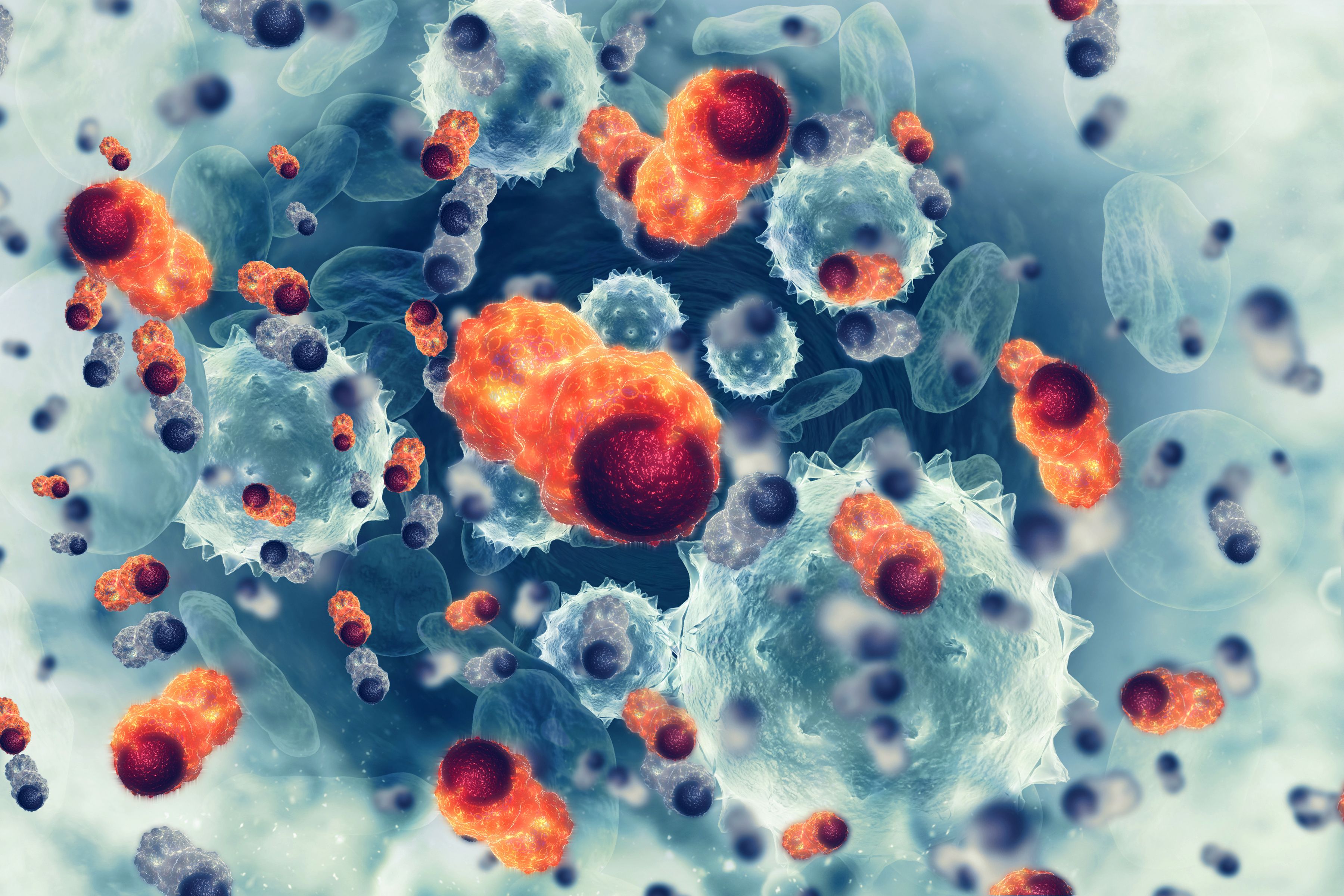Survival Benefit Observed With Adjuvant Cemiplimab in Skin Cancer Subtype
Results presented at 2023 ESMO showed a prolonged survival benefit in patients receiving adjuvant cemiplimab for stage II-IV cutaneous squamous cell carcinoma.
Results presented at 2023 ESMO showed a prolonged survival benefit in patients receiving adjuvant cemiplimab for stage II-IV cutaneous squamous cell carcinoma.

Patients with resectable stage II-IV cutaneous squamous cell carcinoma (CSCC) given adjuvant cemiplimab (Libtayo) had an increased survival benefit of over a year, according to a presentation from the 2023 European Society of Medical Oncology Congress (ESMO).1
These data included 1-year follow up of a single-arm, multicenter phase 2 study (NCT04154943) that looked at the use of cemiplimab therapy after surgery. A year ago, researchers published data for 79 patients given neoadjuvant cemiplimab prior to surgery, which showed the first part of the study met its primary endpoint with 40 patients (51%; 95% CI, 39%-62%) achieving a pathological complete response (pCR) and 10 patients (13%; 95% CI, 6%-22%) who achieved a major pathological response (MPR).2 Now, researchers found that after a year and a half of follow up after surgery and adjuvant therapy, all 40 patients who achieved a pCR did not have disease recurrence, while just 1 patient who had an MPR recurred.
“It's important to note that in the adjuvant portion of the trial, it was left to investigator discretion whether patients would receive adjuvant cemiplimab up to 48 weeks, adjuvant radiation, or observation, and this was based on local pathology review,” explained Neil D. Gross, MD, who presented these data at the meeting in Madrid, Spain.
Among the patients who initially achieved a pCR, only 1 patient was given adjuvant radiation therapy. And this group of patients had an estimated 12-month event free survival (EFS) rate of 94.9% (95% CI, 81.0%-98.7%) compared with 72.0% (95% CI, 43.8%-87.7%) in the 22 patients who did not have surgery or were non-responders. Further, the 12-month EFS rate was also superior in the MPR (n =10) and pathological partial response (pPR; n = 7) groups compared with those who didn’t respond at 89% (95% CI, 43%-98%) and 100% (95% CI, not estimable [NE]-NE), respectively.
Among all patients given neoadjuvant cemiplimab, the median EFS was not reached, but the estimated 12-month EFS rate was 89% (95% CI, 79%-94%). Median EFS was also not reached in the pCR, MPR, and pPR groups who had adjuvant therapy compared with a median EFS of 25 months in the non-responder group (95% CI, 8-NE).
These data were also published concurrently in The Lancet Oncology, where a post-hoc sensitivity analysis was done for 74 patients with stage III-IV disease. In this group, their 12-month estimated EFS rate was 88% (95% CI, 78%-94%) and 87% (95% CI, 76%-93%) at 24 months.2
At a median follow-up of 18.7 months (range, 1.3-30.4 months), researchers also found a 12-month overall survival (OS) rate of 92% (95% CI, 83%-96%), but median OS was not reached. Further, among the 70 patients that underwent surgery, 6 patients (9%) had disease-free survival.
“What is shown here is the stark contrast between patients who had any pathologic response and those who either did not have surgery or did not have a pathologic response in favor of the responders,” explained Gross, professor, and director of clinical research in the department of head and neck surgery at The University of Texas MD Anderson Cancer Center in Houston.
Of the 79 patients enrolled, 70 had surgery with 65 patients having post-surgical management data. Overall, 49% were observed after surgery, 25% were given adjuvant cemiplimab, and 26% had adjuvant radiotherapy. Researchers conducting part 1 of this study administered cemiplimab at 350 mg every 3 weeks for 4 doses before patients underwent surgery.2 At the time, an objective response was seen in 68% (95% CI, 57%-78%). In this first part of the study, 87% of patients had an adverse event (AE) of any grade that occurred during the study with 18% of patients experiencing grade 3 or higher AEs.2
Now, among all patients, 89% had a treatment-emergent AE (TEAE) of any grade and 19% had a grade 3 or greater TEAE.1 One death was attributed to study treatment for a 93-year-old patient with congestive heart failure exacerbation, which was previously reported. In the adjuvant cemiplimab group, no new safety signals were observed with TEAEs of any grade experienced by 10% or more of patients seen in 13 patients and 4 patients had a grade 3 or greater TEAE. The most common TEAE of any grade were diarrhea (25%), fatigue (25%), increased blood creatinine (25%), and squamous cell carcinoma of the skin (25%).
The four grade 3 or greater TEAEs included 1 patient with cardiomyopathy, 1 patient with hypophysitis, 1 patient that underwent a limb amputation, and 1 patient with increased blood potassium. The cases of grade 3 worsening cardiomyopathy and hypophysitis were considered serious AEs; however, no deaths were related to cemiplimab.
“These data support the development of a randomized phase 3 trial, which is underway and set to begin enrollment in 2024,” concluded Gross.
References
- Gross ND, Miller DM, Khushalani NI, et al. Neoadjuvant cemiplimab and surgery for stage II–IV cutaneous squamous-cell carcinoma: follow-up and survival outcomes of a single-arm, multicentre, phase 2 study. Lancet Oncl. 2023. doi:10.1016/S1470-2045(23)00459-X
- Gross ND, Miller DM, Khushalani NI, et al. Neoadjuvant Cemiplimab for Stage II to IV Cutaneous Squamous-Cell Carcinoma. N Engl J Med. 2022;387(17):1557-1568. doi:10.1056/NEJMoa2209813